Watch intangible cultural heritage programs and appreciate national cultural treasures
On June 18th, the 2022 Xianfeng County Cultural and Natural Heritage Day and the Cultural and Ecological Protection Experimental Zone Construction Achievement Promotion and Exhibition was held at the Tangya Tusicheng Site Scenic Spot. 11 townships (districts) in the county and the county's Southern Opera Art Inheritance and Protection Center Bringing splendid intangible cultural heritage performances.
Gaoleshan Town "Bayi Grass Handle Dragon"
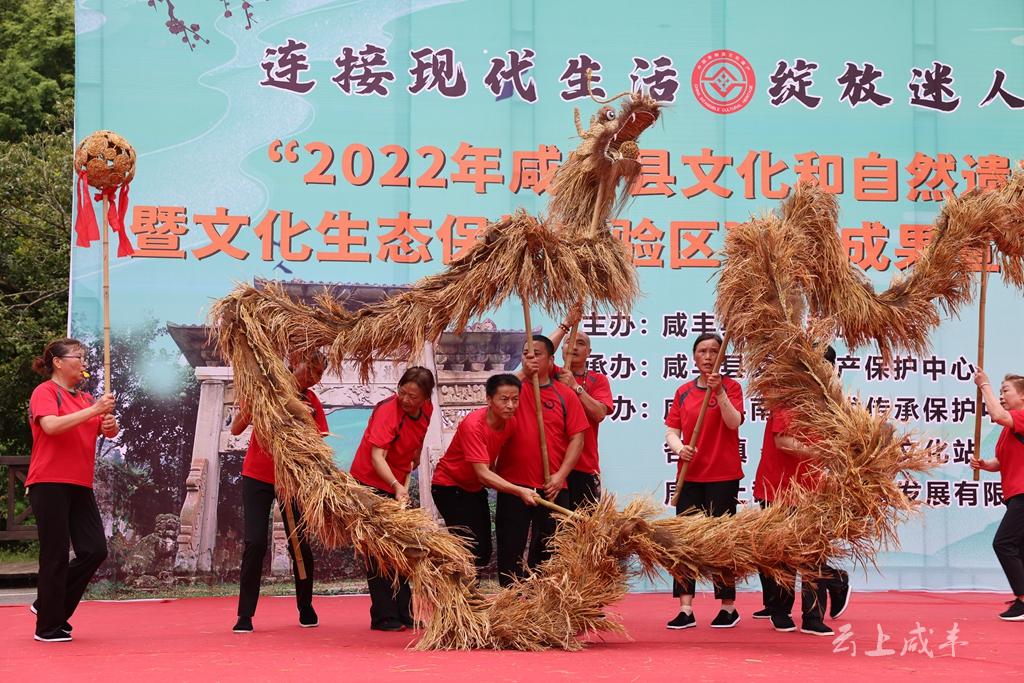

The grass-handed dragon is named after it is made of straw. The playing of the grass handle dragon is similar to the traditional Chinese dragon, and it has its unique movements derived from life and labor scenes. When playing, it is accompanied by gongs, drums, cymbals, dongzi, and suona. The grass dragon rolls up and down in the rhythm of gongs and drums, jumping and rolling all over the field, which is very ornamental. In 2013, "Caobalong" was included in the list of intangible cultural heritage of Hubei Province.
Qingping Town "Bench Dragon"

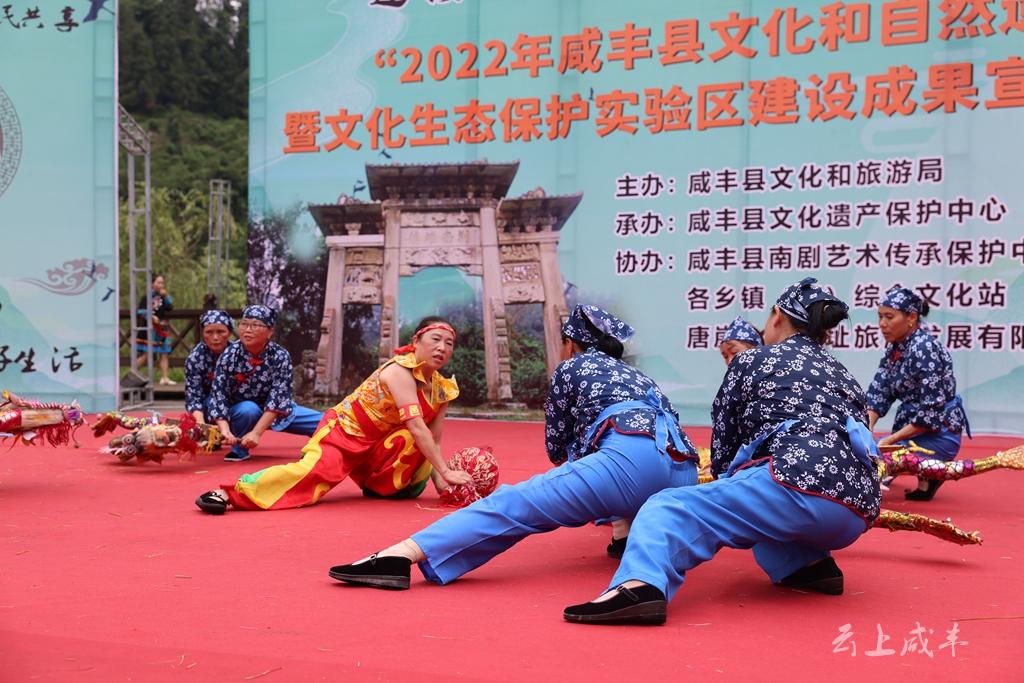
The bench dragon is a swimming dragon lantern made of benches. It is a unique traditional Miao dance form in Xianfeng County. The bench dragon moves are varied. When the dragon is flying fast, the water can't be splashed, and the stick can't get in, which makes people dazzled.
In 2010, Bench Dragon was officially approved as a provincial intangible cultural heritage list item.
Chaoyang Temple Town "Plate Plate"
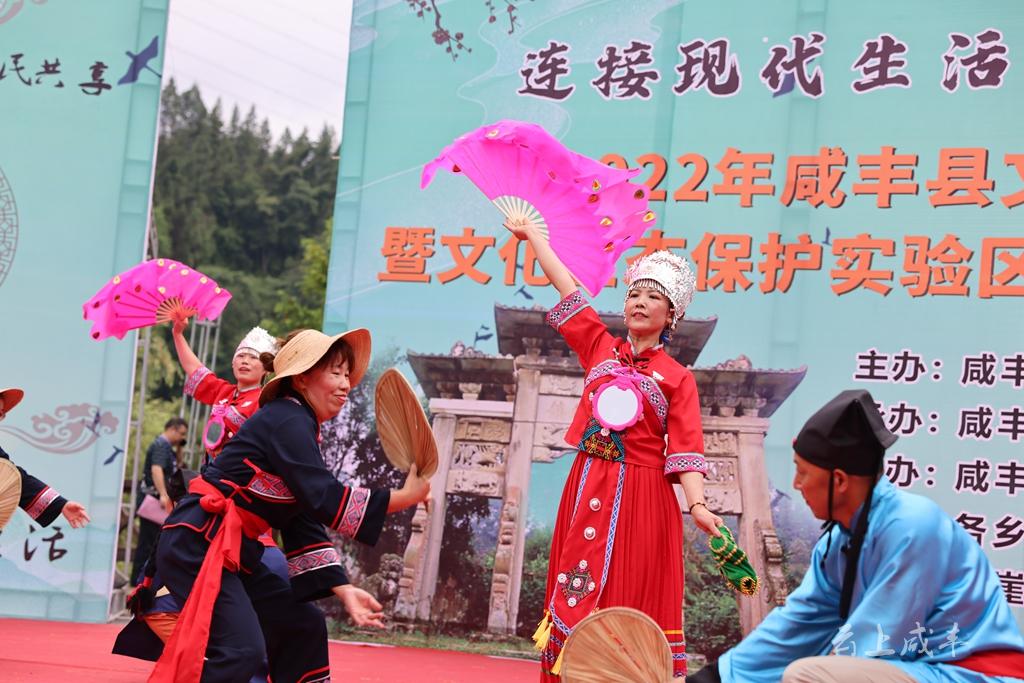
Dipanzi, also known as the Tujia Triad Dance, has vivid characters and light dancing postures. In 2003, Chaoyang Temple Town registered and established the "Folk Art Association" with Dipanzi as the main body, to organize and guide the masses to carry out regular Dipanzi performances. In 2008, Dipanzi was announced as the first batch of intangible cultural heritage items in Hubei Province; in the same year, Chaoyangsi Town was named the hometown of Chinese folk art.
"Suona" in Pingbaying Town


Suona, with a high-pitched and loud pronunciation, is mostly played in folk celebrations. Xianfeng Suona has a special playing form - "Double Dragon Holds a Pillar", that is, when two (or four, six, etc.) ensembles play, you blow your suona, I press your sound hole, or I blow my suona , You press my sound hole, and the tune you play is the same as that played by one person, harmonious, unified, and unique.
The suona in Pingbaying Town is famous for its unique performance skills. In 2015, it was announced as an intangible cultural heritage of Hubei Province.
"Flower Gongs and Drums" in Huolongping Township
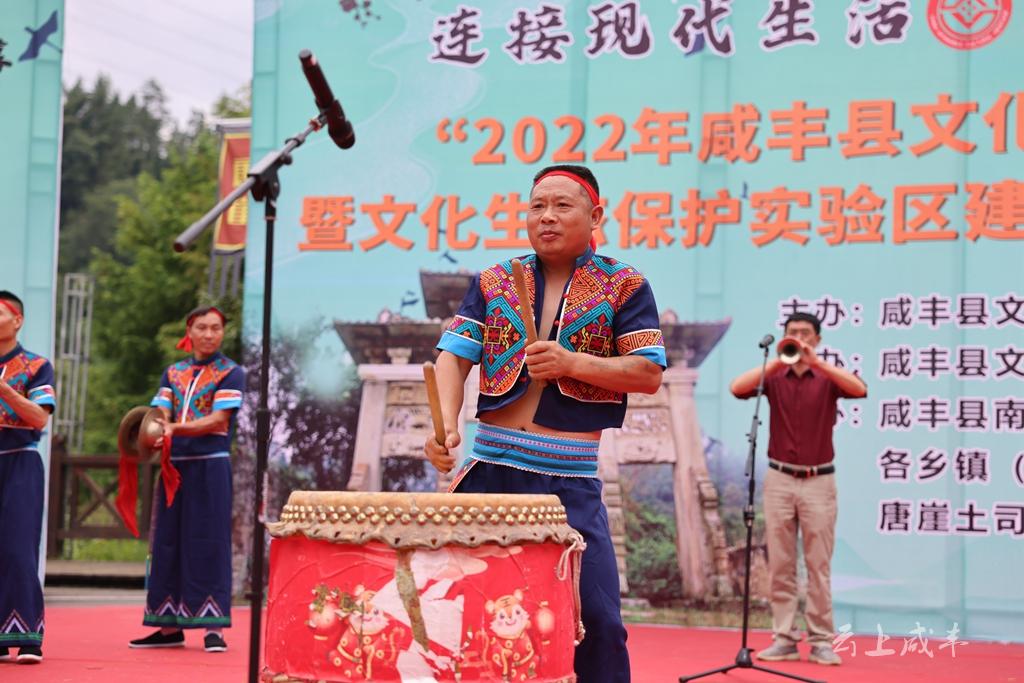
Flower gongs and drums" is a very popular and particularly prominent wind and percussion music in the folk wind and percussion music, which is different from other forms of folk wind and percussion music.
"Hua Gong and Drum" is composed of drums, gongs, cymbals, small gongs (also called hook gongs) and suonas. "Flower gongs and drums" are played in a variety of ways, with a lively rhythm, soothing and beautiful, with regional characteristics and pastoral flavors.
Zhongbao Town "Lianxiang"


Lianxiang is a common traditional dance in Xianfeng County. The performers hold the bamboo sticks strung with copper coins and tap the limbs, shoulders and back of the body to make crisp and pleasant sounds. The dance is lively rhythm and beautiful.
"Lotus Picking Boat" in Qujiang Town
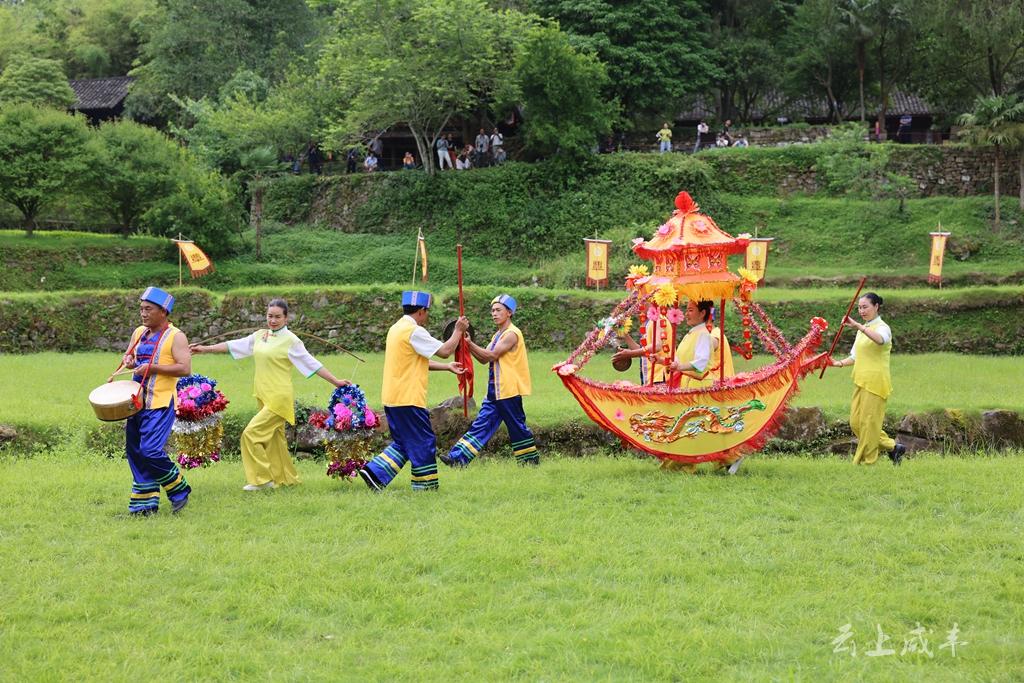

The lotus-picking boat is made of bamboo strips as a skeleton and tied into a boat-like shape. The exterior is made of colorful cloth or colored paper. The roof of the boat is tied into a pavilion. One person can stand in the middle of the boat. There are two boat belts. The ship's shoulders, stepping on the ship's hands hold the side of the ship.
From the first to the fifteenth day of the Spring Festival, the colorful lotus boats will go along the streets to worship the New Year, dancing and singing, leaving an unforgettable impression on the majority of the people.
Daluba District "Mountain Folk Song Duet"
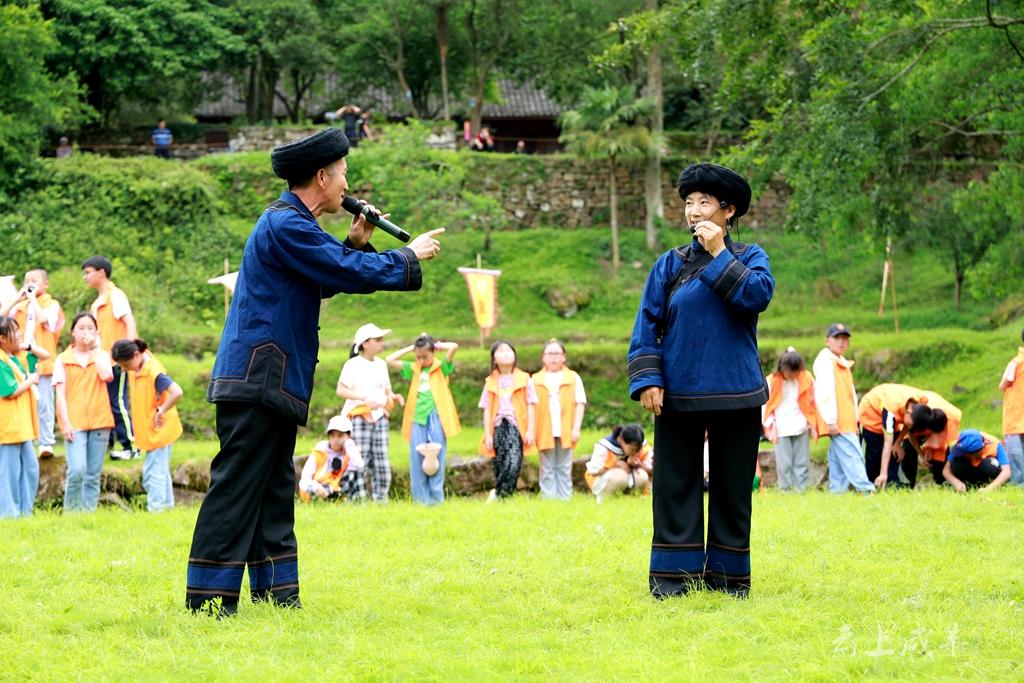
Xianfeng Tujia Mountain folk songs have been around for a long time, and were formed through continuous oral transmission, such as Gaoqiang folk songs, love songs (anti-songs), tea picking songs, Yangko songs, hair combing songs, toast songs, crying marriage songs, etc. Its content Extensive, compact in structure, bright in tune, free in rhythm, rich in local colors and unique in Tujia music.
Golden Cave Township "Three Stick Drums"
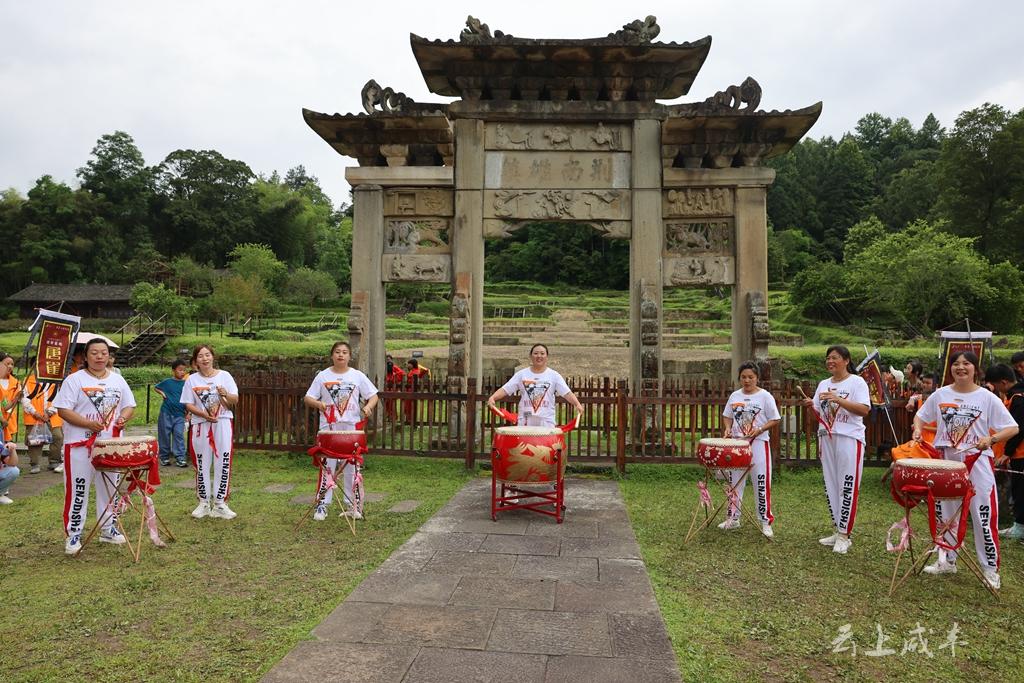
The three-stick drum is also called "huagu", which originated from the "three sticks" in the Tang Dynasty. In the early years of the Republic of China, it was introduced into Xianfeng, and was popular in the county seat, Huangjindong Township, Qujiang Town, Zhongbao Town, Pingbaying Town, Qingping Town and other places, and later developed to the whole county.
Small Village "Fighting the Land"

Fighting the land is a Nuo dance popular in the small villages and towns of Xianfeng County. It is said that it has the functions of exorcising ghosts and warding off epidemics and offering sacrifices. It is usually performed from the first day of the new year to the sixteenth of the first lunar month. Fighting the land is performed by three people, one of whom plays the god of the earth, wearing a mask of the god of the earth, holding a cane in one hand and a fan in the other; Men dressed as women, holding colorful scarves, played the role of the daughter-in-law of the God of the Earth.
Tangya Town "Bench Boxing"

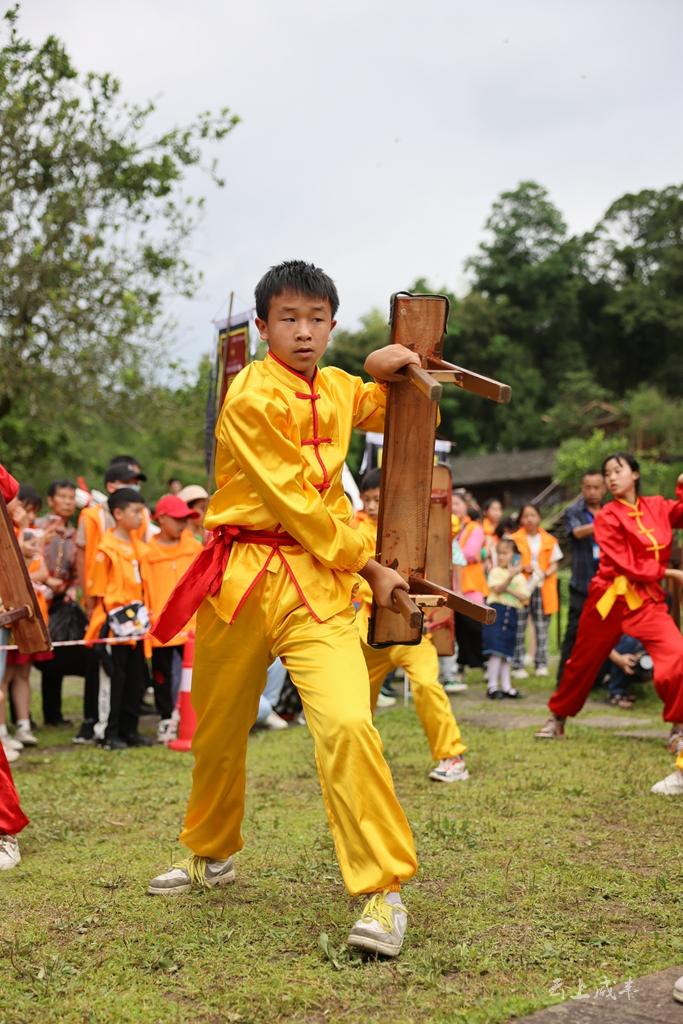
Bench boxing, as a traditional sports competition among the people of Xianfeng Tujia people, can be used for both self-defense and fitness. It is a provincial intangible cultural heritage list item in Xianfeng County. Through the bench boxing, you can understand the history of the Tujia people, and understand the production and living customs of the Tujia people. Therefore, the bench boxing is not only an abstract form of activity passed down from generation to generation, but also carries the profound history and culture of the Tujia people.
County Southern Opera Art Inheritance Center Southern Opera performance "Family Style Holds Up the Chinese Dragon"
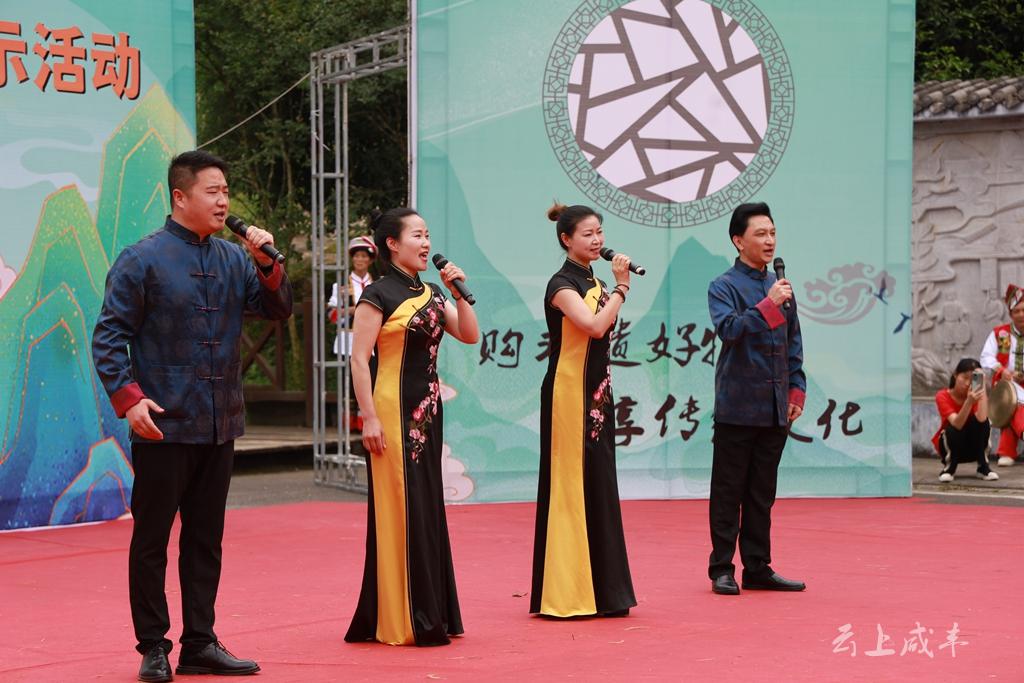
"Southern Opera sings high-pitched and strong, like the sound of deep mountains and valleys." Southern Opera, formerly known as Nanxi Opera and Shi Nan Diao, is a drama with both local and national characteristics gradually formed in the process of long-term exchange and integration of Tujia culture, Ba culture and Han culture. It is one of the four major local dramas in Hubei Province. One, the first of the five golden flowers in Enshi local opera.
On the same day, at the same time as the intangible cultural heritage project exhibition activities were carried out, the representative projects of intangible cultural heritage were displayed and sold, and the intangible cultural heritage and cultural relics photo exhibitions were also held simultaneously... colorful, dazzling, and very popular.



In recent years, Xianfeng County has attached great importance to the protection and rescue of intangible cultural heritage, and has always adhered to the policy of "protection first, rescue first, rational use, inheritance and development", and adheres to the principle of "government-led, social participation, long-term planning, step-by-step" The protection measures of "implementation and combination of point and face" have made certain achievements in the construction of the national cultural and ecological protection experimental zone. At present, the county has 2 national-level intangible cultural heritage projects, 16 provincial-level projects, 40 state-level projects, and 83 county-level projects.
 渝公网安备 50010702504639号
渝公网安备 50010702504639号